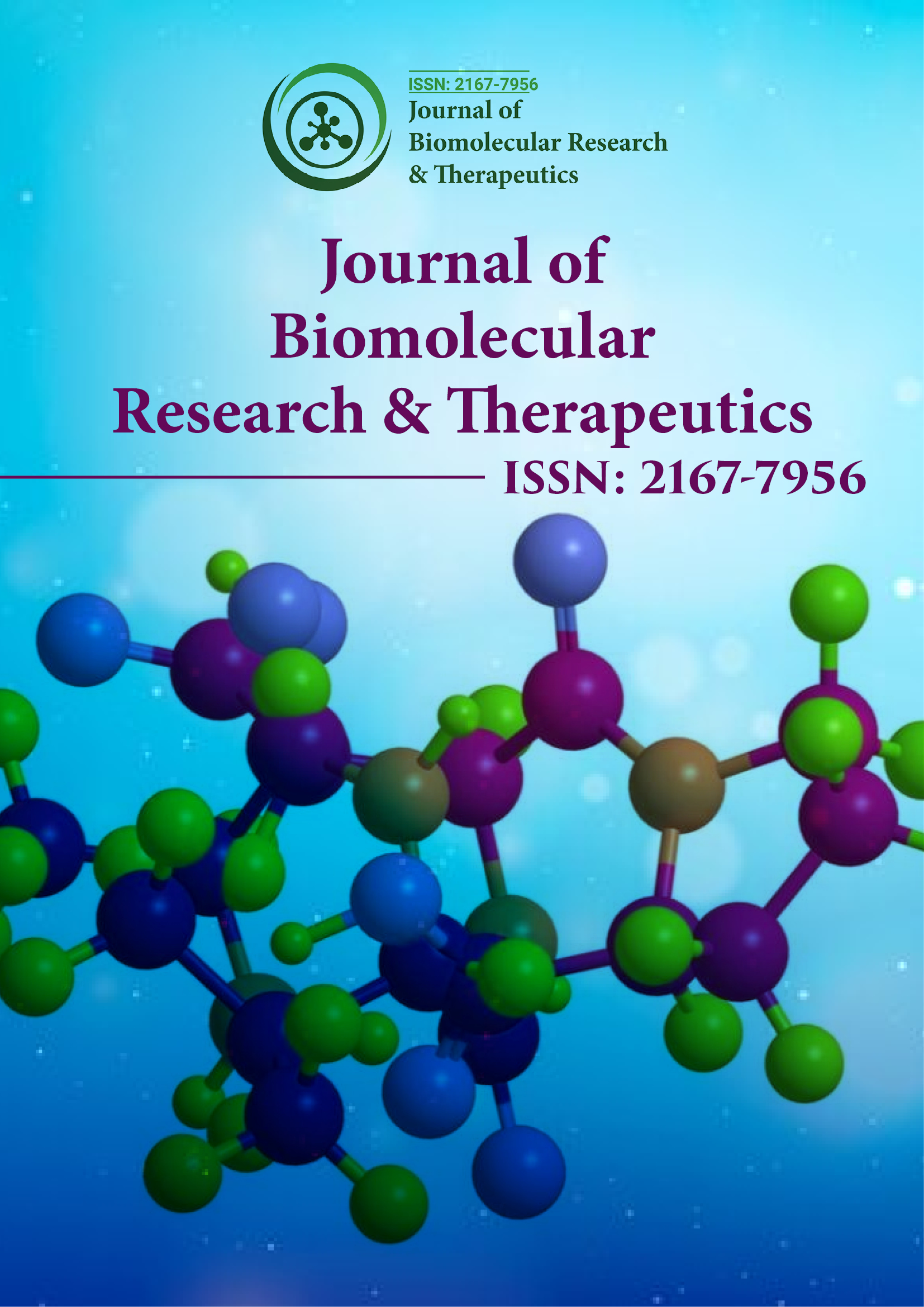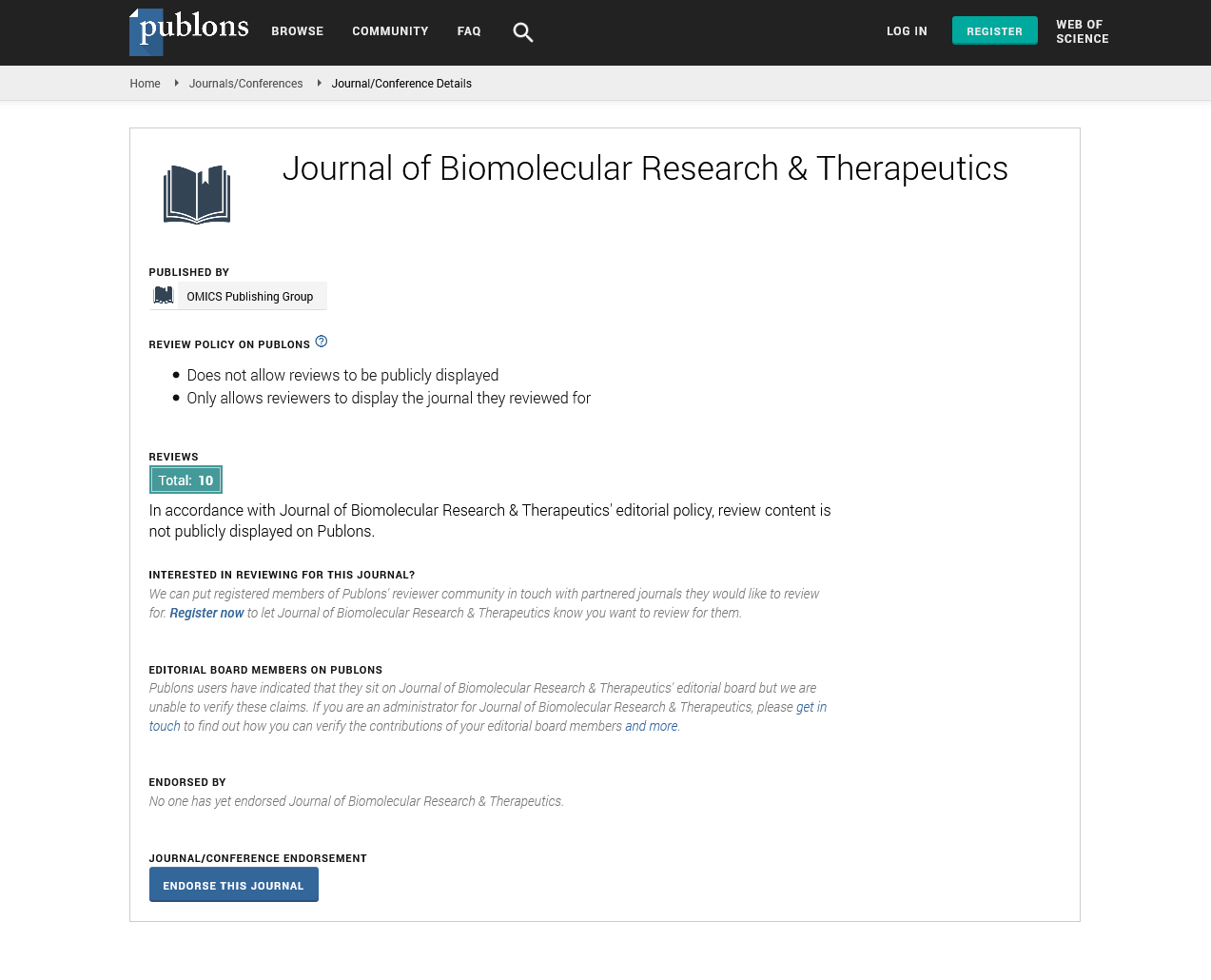PMC/PubMed Indexed Articles
Indexed In
- Open J Gate
- Genamics JournalSeek
- ResearchBible
- Electronic Journals Library
- RefSeek
- Hamdard University
- EBSCO A-Z
- OCLC- WorldCat
- SWB online catalog
- Virtual Library of Biology (vifabio)
- Publons
- Euro Pub
- Google Scholar
Useful Links
Share This Page
Journal Flyer

Open Access Journals
- Agri and Aquaculture
- Biochemistry
- Bioinformatics & Systems Biology
- Business & Management
- Chemistry
- Clinical Sciences
- Engineering
- Food & Nutrition
- General Science
- Genetics & Molecular Biology
- Immunology & Microbiology
- Medical Sciences
- Neuroscience & Psychology
- Nursing & Health Care
- Pharmaceutical Sciences
Short Communication - (2024) Volume 13, Issue 4
Antimicrobial Effect of Aloe Vera and Ginger in Dental Caries and Periodontal Disease
Batool Hassan AL-Ghurabi*Received: 06-Mar-2020, Manuscript No. BOM-24-3568; Editor assigned: 11-Mar-2020, Pre QC No. BOM-24-3568 (PQ); Reviewed: 25-Mar-2020, QC No. BOM-24-3568; Revised: 15-Jul-2024, Manuscript No. BOM-24-3568 (R); Published: 12-Aug-2024, DOI: 10.35248/2167-7956.24.13.394
Abstract
Dental caries and periodontal disease are the two most common oral diseases in man. These most prevalent oral infectious diseases are historically the province of dentists for diagnosis and treatment. Recent advances in the field of dentistry have promoted the use of various herbal and natural products for the prevention and treatment of various oral diseases and conditions. Aloe vera and ginger are one such product comprise various biologically active ingredient and has gained considerable importance in clinical applications in medicine and dentistry. The aim of this article is shedding light on the significance role of aloe vera and ginger herbs in some oral diseases.
Keywords
Aloe vera; Ginger; Oral diseases; Antimicrobial effect
Introduction
Dental caries and periodontal disease may be related to each other in some way since they both occur in the mouth, particularly at teeth or tooth-surrounding tissues. They are thought to share common contributory factors with each other and with a number of chronic systemic conditions. Herbs and plants have been used as a source of therapeutic compounds in traditional medicinal system since ancient time, so there is a wide need to find an alternative to chemotherapeutic drugs for treatment of diseases especially those derived from plants that are easily available and have considerably less side effects [1].
The antimicrobial effect of aloe vera is at most consequent to the anthraquinones present in the sap, which are associated with prohibition the synthesis of bacterial protein. The plant consists of an antibacterial agent called acemannan that plays an indirect role in its therapeutic activities through phagocytosis. Studies completed in vitro and in vivo contribute to scientific understanding of how it fights pathogens by reducing secondary infections, increasing the activity of T-lymphocytes and increasing the activity of macrophages, thus promoting wound healing [2].
Description
Ginger (Zingiber officinale) has strong antibacterial and antifungal properties, since it contains essential phenols (e.g. gingerol-10) and important minerals e.g. potassium, magnesium, phosphorus, iron as well as vitamins e.g. B1, B2, B3, B6 and vitamin C. Several studies have shown that active constituents of ginger inhibit multiplication of colon bacteria. It inhibits the growth of Escherichia coli, Proteus sp., Staphylococci, Streptococci and Salmonella. Ginger inhibits Aspergillus, a fungus known for production of aflatoxin, a carcinogen [3].
Role of aloe vera and ginger in dental caries
Aloe vera: Current research supports the use of aloe vera as an alternative treatment of oral health management. Additionally, the reports indicate that aloe vera can help prevent tooth decay. Several studies have found that aloe vera extracts definite antibacterial effect against Streptococcus mutans. In 2017, Subramaniyan and Kayalvizhi reported anti-caries activity of aloe vera in experimentally induced dental caries in rats. The anticaries activity of aloe vera may be due its antimicrobial activity and antioxidant property. This activity could be attributed to a number of pharmacologically active compounds including anthraquinones, aloin, aloe-emodin, aloetic acid, anthracine, aloe mannan, aloeride, antranol, chrysophanic acid, resistanol and saponin [4].
Ginger: Ginger is known to inhibit dental caries that usually cause decay of the tooth. Since they have an antibacterial effect, it is used in the treatment of oral thrush and sore mouth. Mathai and colleagues reported that ginger extract possess potential antibacterial against mutans Streptococci and the inhibition zone of ginger extract was 11.7 mm [5].
Other study conducted by Atai and colleagues showed that the inhibition zone was 11.2 mm. However, other study conducted by Tuqa in 2013 about the effect of ginger extract on mutans Streptococcus and Candida albicans showed that both of the microorganisms were sensitive to ginger extract [6].
Role of aloe vera and ginger on periodontal diseases
Aloe vera: Aloe vera has medicinal properties such as antibacterial, anti-inflammatory and antiviral properties, which promote wound healing at a faster pace and aid in healing of various lesions in the oral cavity. Recently, researches show that aloe vera can inhibit the growth of diverse oral microorganisms and it is an active adjunct to non-surgical scaling and root planing in patients with periodontitis. Previous study conducted by Dodwad and Arora observed a reduction in plaque index, gingival index, bleeding index, probing pocket depth index and colony forming unit of Porphorymonas gingivalis and Prevotella intermedia in patients with chronic periodontitis when treated with aloe vera gel as a part of regular oral hygiene. Moreover, mouth rinsing of aloe vera is effective in reducing periodontal indices such as chlorhexidine and therefore it can be used as an alternative product in treating periodontal diseases. Sub-gingival administration of aloe vera gel lead to improvement of periodontal condition and could be used as a local drug delivery system in periodontal pockets this is well documented in previous researches as it works as a powerful antiseptic in pockets where normal cleaning is difficult. Additionally, direct applications of aloe vera tooth gel to the site of periodontal surgery along with periodontal dressing or to gum tissues when they have been traumatized with a tooth brush, dentifrice abrasion, sharp foods, dental floss and toothpick injuries have shown improved healing properties this may be attributed to the numerous constituents of aloe vera gel which significantly increases periodontal ligament cell proliferation, upregulation of growth/differentiation factor 5, type I collagen and alkaline phosphatase activity in primary human periodontal ligament cells as well as anti-inflammatory property of aloe vera which help in reduction of gingival inflammation [7].
Ginger: The active ingredients of the ethanolic and n-hexane extracts of ginger 10-gingerol and 12-gingerol respectively, exhibited antibacterial effect against anaerobic gram-negative periodontal bacteria, Porphyromonas endodontalis, Porphyromonas gingivalis and Prevotella intermedia, causing periodontal diseases. Five ginger constituents were isolated from the active silica-gel column chromatography fractions by high-performance liquid chromatographic method, elucidated their structures by electrospray ionization mass spectrometry and nuclear magnetic resonance spectroscopy mainly for the evaluation of antibacterial activity, finally, the spectroscopy research showed that two highly alkylated gingerols, namely 10-gingerol and 12-gingerol successfully inhibited the growth pattern of these periodontal pathogens [8].
Conclusion
We can conclude that the use of aloe vera and ginger extracts in preparing of mouthwashes and toothpaste may prevent dental caries and periodontal disease.
Conflicts of Interest
The authors and planners have revealed no possible conflicts of interest, financial or else.
References
- Nyvad B, Takahashi N. Integrated hypothesis of dental caries and periodontal diseases. J Oral Microbiol. 2020;12(1):1710953.
- Prabhakar AR, Karuna YM, Yavagal C, Deepak BM. Cavity disinfection in minimally invasive dentistry-comparative evaluation of aloe vera and propolis: A randomized clinical trial. Contemp Clin Dent. 2015;6(1):S24-S31.
[Crossref] [Google Scholar] [PubMed]
- Mangaiyarkarasi SP, Manigandan T, Elumalai M, Cholan PK, Kaur RP. Benefits of aloe vera in dentistry. J Pharm Bioallied Sci. 2015;7(1):S255-S259.
[Crossref] [Google Scholar] [PubMed]
- Joe MM, Jayachitra J, Vijayapriya M. Antimicrobial activity of some common spices against certain human pathogens. J Med Plant Res. 2009;3(11):1134-1136.
- Subasree S, Murthykumar K. Effect of aloe vera in oral health: A review. Res J Pharm Tech. 2016;9(5):609-612.
- Subramaniam P, Dwivedi S, Uma E, Babu KG. Effect of pomegranate and aloe vera extract on Streptococcus mutans: An in vitro study. Dent Hypotheses. 2012;3(3):99-105.
- Jain S, Rathod N, Nagi R, Sur J, Laheji A, Gupta N, et al. Antibacterial effect of aloe vera gel against oral pathogens: An in vitro study. J Clin Diagn Res. 2016;10(11):ZC41-ZC44.
[Crossref] [Google Scholar] [PubMed]
- Bhat G, Kudva P, Dodwad V. Aloe vera: Nature's soothing healer to periodontal disease. J Indian Soc Periodontol. 2011;15(3):205-209.
[Crossref] [Google Scholar] [PubMed]
Citation: AL-Ghurabi BH (2024) Antimicrobial Effect of Aloe Vera and Ginger in Dental Caries and Periodontal Disease. J Biomol Res. 13:394.
Copyright: © 2024 AL-Ghurabi BH. This is an open-access article distributed under the terms of the Creative Commons Attribution License, which permits unrestricted use, distribution, and reproduction in any medium, provided the original author and source are credited.

